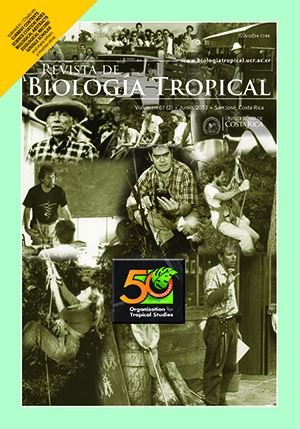Abstract
The genus Zamia is morphologically and ecologically the most diverse of the order Cycadales. Throughout its history this genus has been restricted to the New World and is presently almost entirely restricted to the Neotropics. Unusual anatomical traits of the leaflets, such as the sunken stomata and thick cuticle, are common in this and related genera. The objective of this research was to study and compare the leaflet anatomy of Zamia acuminata and Z. pseudomonticola and establish possible phylogenetic relationships between the anatomical traits and the near relatives of these species. The leaf material was obtained from living plants and then processed for electron microscopy study. We found that both species are very similar to each other and to Z. fairchildiana, and that they share several unusual traits with other species of the genus, such as the parenchyma morphology, the spatial distribution of tissues between the veins and the stomata morphology. The main differences between these species were seen in their fiber clusters and in the abundance of trichome basal cells on the epidermis. The anatomical similarities between the three species could be the result of their close phylogenetic relationship and the divergences between them could be the result of recent speciation during the Pleistocene, resulting from geological changes in Southern Costa Rica.##plugins.facebook.comentarios##
Downloads
Download data is not yet available.






